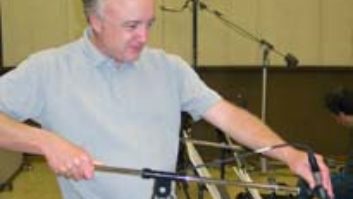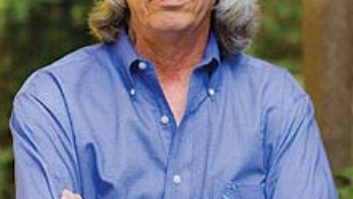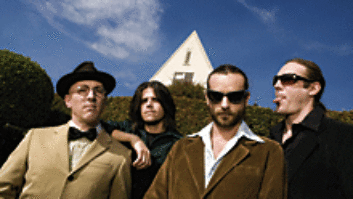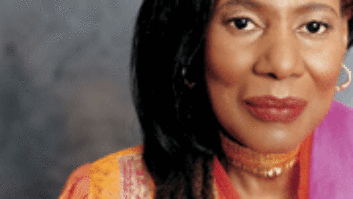Even in a mixed market like Los Angeles, only a handful of recording studios successfully combine work for pop music with jingles and scoring for film and television. Burbank’s O’Henry Sound Studios is one of those. The 14,000-square-foot, two-room facility opened in 1993, after engineer Hank Sanicola and his wife, Jackie, decided to close their home studio and build a from-the-ground-up commercial complex. In the ensuing eight years, O’Henry has become a favorite orchestral recording place for such top scoring mixers as Shawn Murphy, Armin Steiner and John Richards. Film credits include Austin Powers, Chicken Run and Dinosaur. The studio has also played host to album projects for artists from REM and k.d. lang to Mariah Carey, Ray Charles and Sugar Ray. Commercial soundtracks have included work for Southwest Airlines, McDonalds and National Geographic, among many others.
“People told me you couldn’t build rooms that you’d be able to rent to both record and film people,” recalls Hank Sanicola. “But with the help of people like Shawn, Armin and John, we have. From the beginning, they liked our location and our staff, and they helped us learn how to provide what the scoring business needs.
“We spent a lot of time at it. For the first string date we did, I ran out to Costco and bought, I think, 40 chairs. It was a 30-piece date, and, all of a sudden, we needed headphones, music stands, chairs…Then we did a 40-piece and then a 50-piece. It just took off. We didn’t really go after the business, we just got some sessions and learned how to make them happy.”
The O’Henry complex, originally designed with the help of architect Jack Edwards and studio consultant Rick Ruggieri, has always had a stylish and comfortable vibe, featuring a garden patio, a large common lounge and kitchen, and private lounge/offices for each studio.
In 1998, Studio B was renovated with a new design by studio bau:ton and the installation of an 80-input SSL 9000 J Series console fitted with an SL 956 J multiformat monitoring system. In 2000, it was time to upgrade Studio A, which had housed a custom API console since the facility opened. The Sanicolas and chief engineer Harold Kilianski decided to stick with the custom direction, embarking upon building one of the largest fully discrete consoles in the world. Studio A’s desk now features 88 inputs fitted with enhanced API modules, Flying Faders, and 5.1 mixing and monitoring capability.
“Our objective was to have the capacity to satisfy the demand of high-profile record projects and/or scoring and mixing in a 5.1 mode on something that sounded really good and was easy to use,” Hank Sanicola explains. “Also, we knew that our clients liked Flying Faders. I had specific applications that I needed to address, and I wanted something simple. There was nothing out there that quite fit the bill.”
“The whole mission of this project was to keep the original sound and to improve what we could,” adds Kilianski. “We wanted more buses; we wanted to balance everything to minimize connection issues, we needed more inputs and a 5.1 center section. But, in obtaining those things, our emphasis was on a short signal path. We wanted to go through as few electronics as possible in order to maintain the sonic character.”
Sixty-four of the original modules were reconditioned, and Andrew Isett newly built 24 more, an endeavor requiring painstaking detail (making metal plates, painting and silk screening). All of the modules are now housed in a frame specially constructed by Dale Manquen, because the original API frame wouldn’t carry the weight and size of the new 16½-foot console.
The modules house traditional API-style 2520 amps. The center section, also all discrete, was designed by Kilianski with board design by Steve Firlotte of Inward Connections, using SPA 690 amp blocks designed by John Hall. The Flying Faders automation system now supplies 95 automated faders.
To complete the project, Studio A was shut down for two months. In addition to the console rebuild, the control room was stripped down to cement and redone, complete with new floor and wall treatments designed by studio bau:ton. Since reopening, projects in Studio A have included Dianne Reeves, Placido Domingo, Star Trek Voyager and mixing for the soundtrack of Stephen Spielberg’s upcoming film AI.
“The only way to do this well is to really stay on top of it,” Sanicola concludes. “It’s about taking care of all the little things, consistently. The main thing is, you try to make people feel welcome when they walk in the door.”




